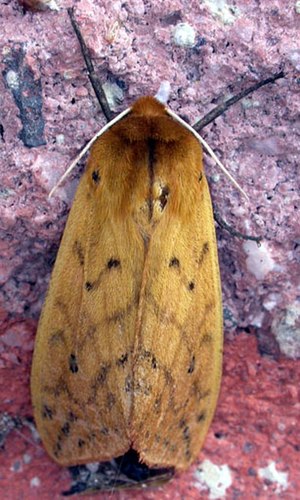 Image via Wikipedia Image via Wikipedia |
| Isabella Tiger Moth |
The length of their black coloration actually depends on the amount of moisture they receive while growing, but no large study has ever been completed to see if they can predict the weather.
The brown and black banded Woolly Bears are the fuzzy and harmless larvae of the Isabella Tiger Moth. No real study has ever been conducted to see if they can predict the weather. But in 1948 Dr. Curran did a loose study where he recorded the stripe length of a small sampling of caterpillars and then the harshness of the following winter. His experiment was publicized and made the Woolly Bear Caterpillar one of the most recognized caterpillars in North America.
Some woolly bears go through metamorphosis in the summer, while others overwinter and pupate in the spring.
Yesterday I watched a Woolly Bear Caterpillar crossing the back porch looking for a safe spot. These fall woolly bears will spend the winter in the crevices of tree bark, under some dead leaves, or under firewood. Hurry little guy I see the cold shadow of winter coming!
Category ›
Nature up close
 Unknown
Unknown
 Tuesday, November 30, 2010
Tuesday, November 30, 2010











No comments:
Post a Comment